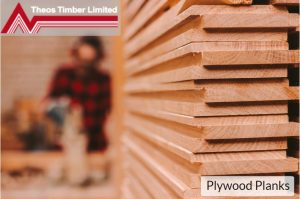Plywood is considered a modern material, but it has a history that dates back to the ancient days. It is a highly versatile wood product revered for its strength, non-warping elements, affordability and flexibility. This material is made through the gluing together of veneers, a technique that has been adopted since 2600 BC, common among the Egyptians.
 In the 1850s, plywood ventured into the industrial scale. The early modern era of this wood was made from decorative hardwood, particularly in the manufacture of furniture items, such as chests, doors and cabinets, among others. It was not until the 20th century that the construction of plywood derived from softwood species came into the scene.
In the 1850s, plywood ventured into the industrial scale. The early modern era of this wood was made from decorative hardwood, particularly in the manufacture of furniture items, such as chests, doors and cabinets, among others. It was not until the 20th century that the construction of plywood derived from softwood species came into the scene.
Who Invented Plywood?
Samuel Bentham, a British mechanical engineer made a patents application in 1797, what he described as a concept to laminate layers of veneers by gluing them together to come up with a thick layer. This is what is today known as plywood. During his time, veneers were rift sawn, quarter sawn and flat sawn, pieces that were cut into different angles, thereby limiting in length and width.
50 years later, Immanuel Nobel, a Swedish engineer and architect, discovered that bonding various thin layers of wood together would make the pieces stronger. It was then that plywood planks started being used to support easel paintings, a replacement to the conventional cardboard or canvas.
What are the Three Types of Plywood?
While plywood may seem to be an easy choice to make, there are different variations, meaning that you will need to do some research to ensure you are purchasing the right one. Note; the different types have variations in terms of ply, size and other factors, all of which determine their application. The three major types include:
1. Hardwood
Hardwood plywood planks have 3-7 layers of maple, walnut, birch, oak and other hardwoods. These are glued together for a strong finish and are suitable for use in sporting equipment, furniture, musical instruments and any other item that requires a strong frame.
2. Softwood
This plywood is carved from redwood, cedar, pine and other softwoods. It is ideal for temporary shelving and flooring, subflooring and sheathing. Although it is strong, it lacks water-resistant qualities, meaning it cannot be used outdoors.
3. Marine
This one comes bonded with a water-resistant exterior. It is not completely waterproof but it can handle moisture in moderation. This is one of the highest quality plywood materials on the market today. It is excellent when used in outdoor furniture such as benches, as well as, decorative elements.
If you are in Manchester or anywhere in North West, UK and are looking for reliable timber merchants and wholesalers, Theo’s Timber Ltd is what you are looking for. Not only will you get a large variety of plywood materials, but also get expert help in selecting what works best for your project.
